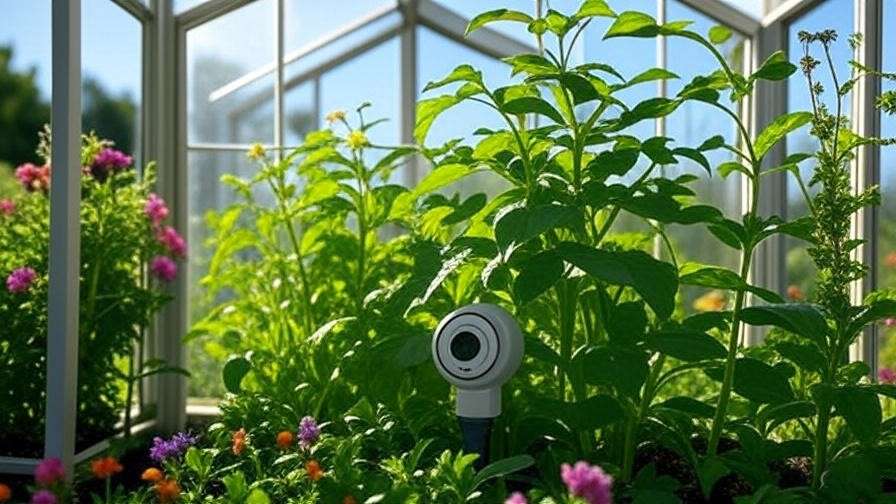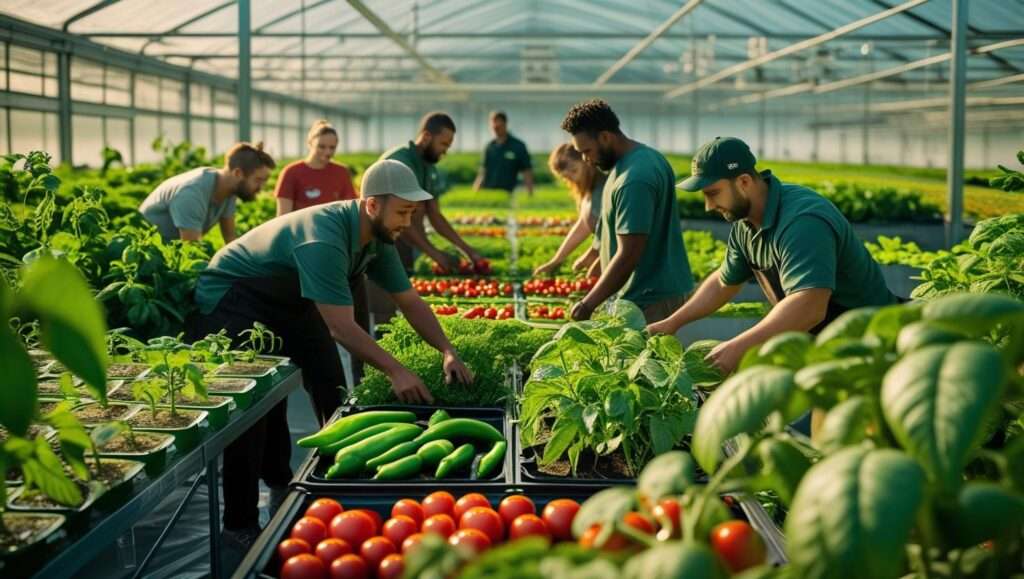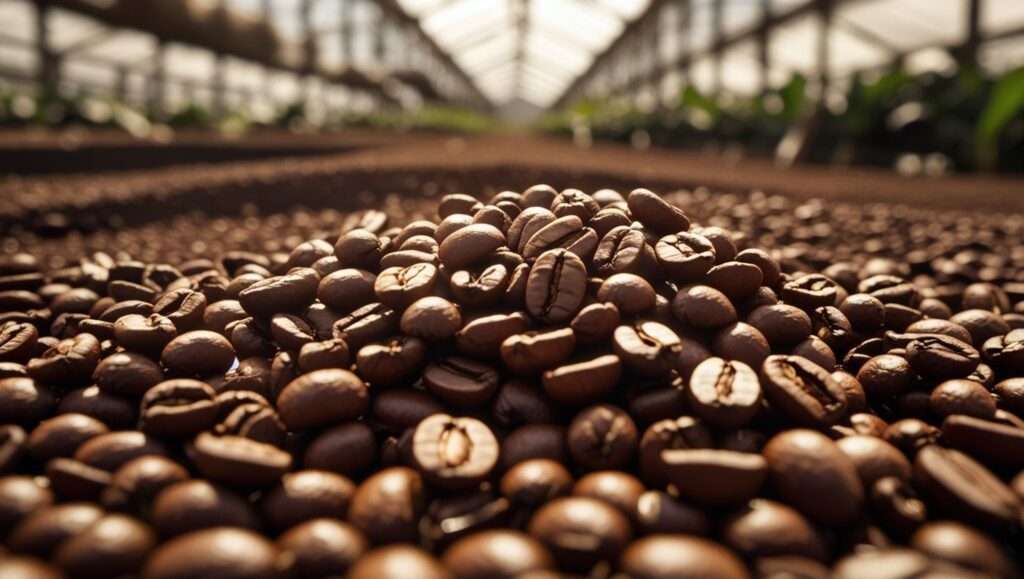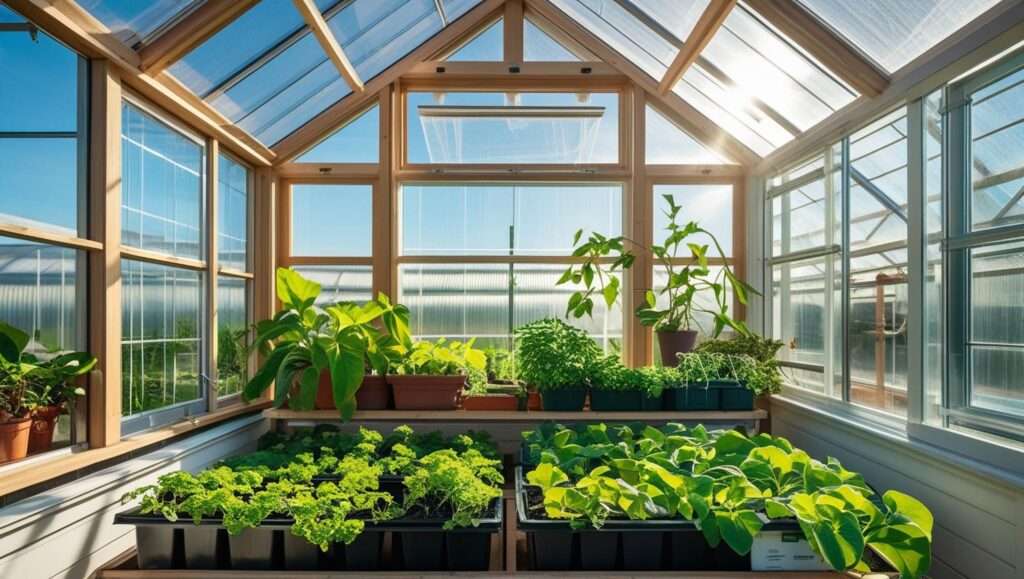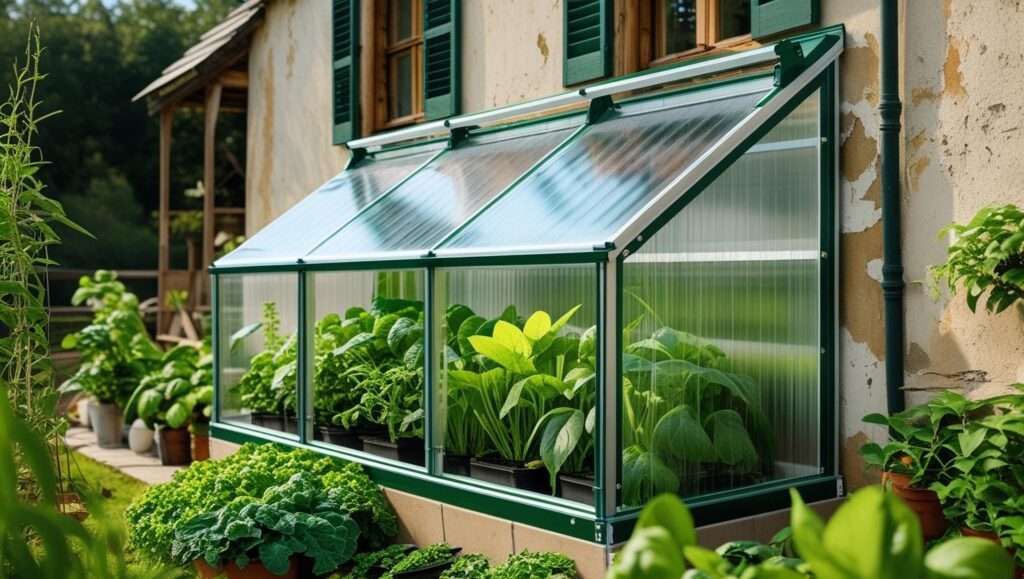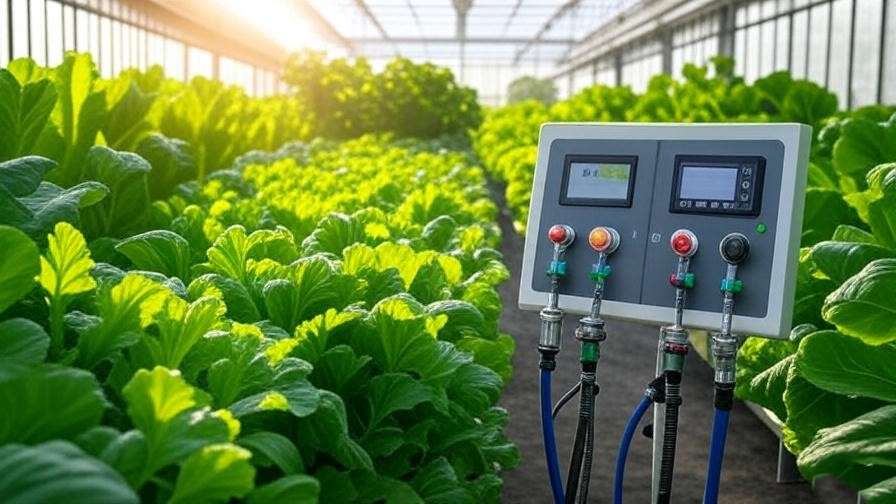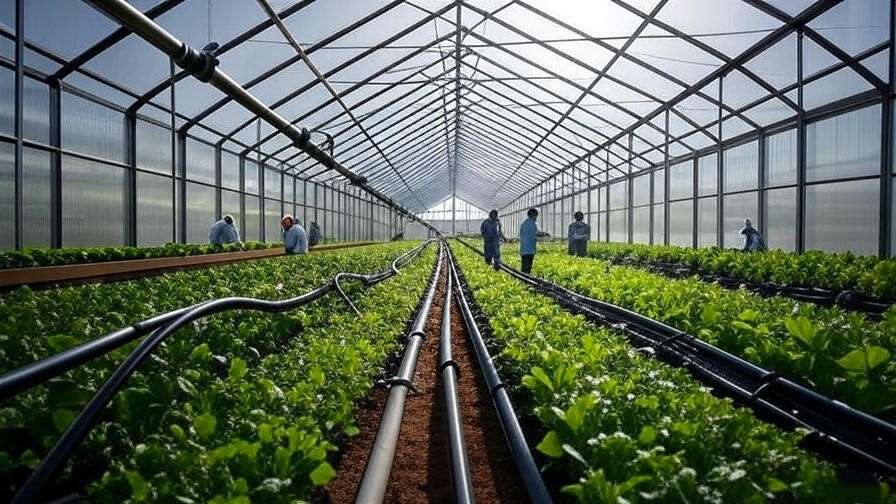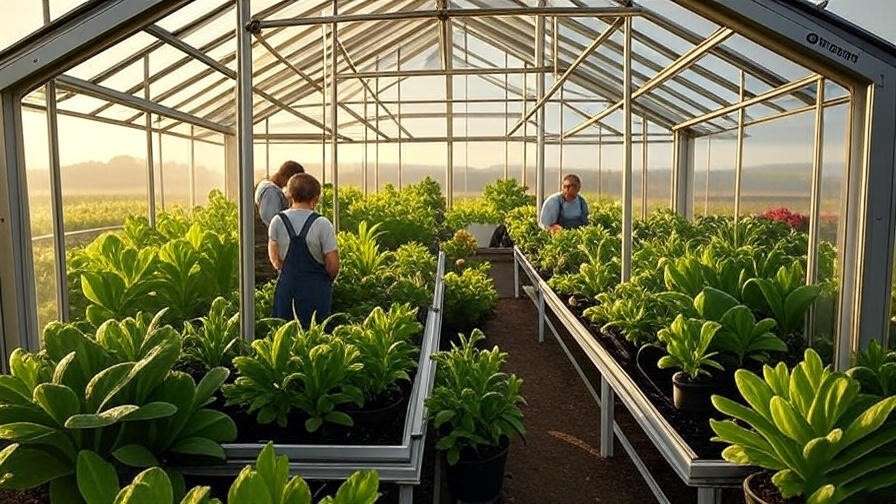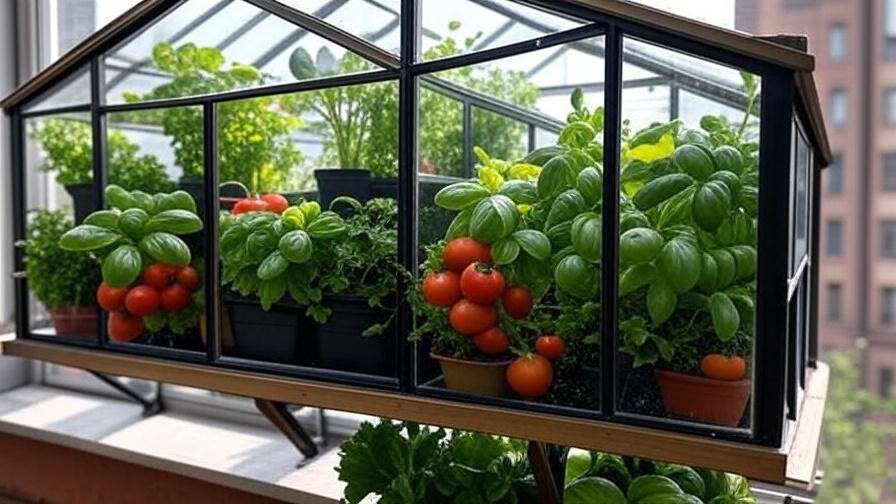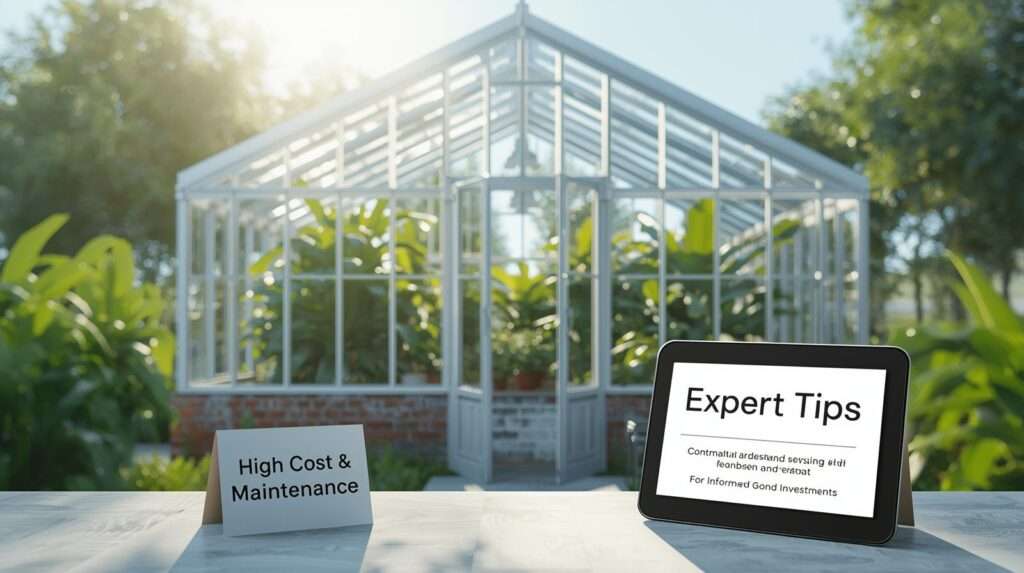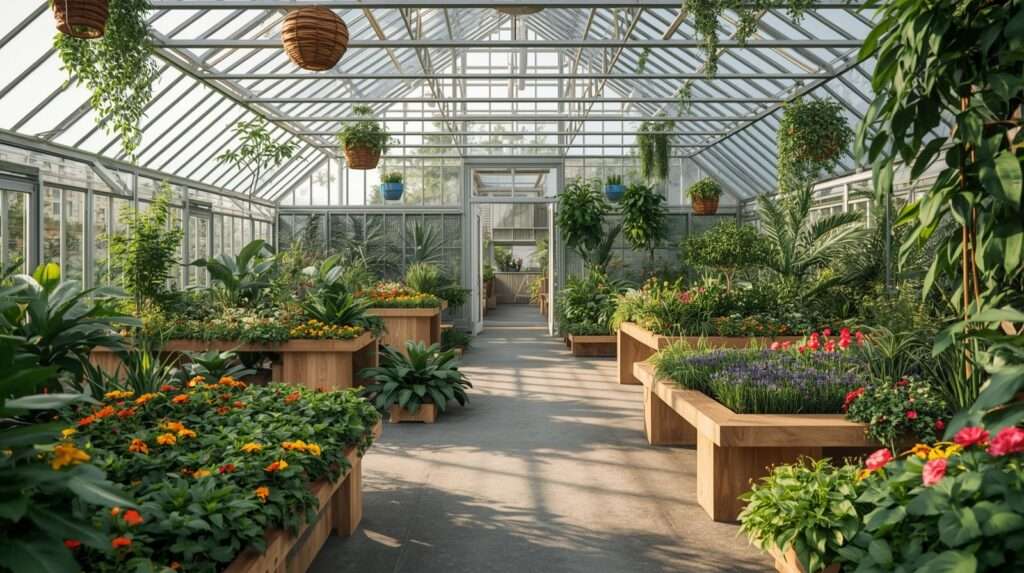Swelteringly unbearable summer days can turn your small greenhouse into a plant-killing oven, threatening the lush harvests you’ve worked so hard to cultivate. For small-scale growers, hobbyists, and home gardeners, mastering small greenhouse temperature control in summer is not just a task—it’s a necessity to protect crops and extend growing seasons. High temperatures can stress plants, reduce yields, and even cause irreversible damage. But with the right strategies, you can keep your greenhouse cool, productive, and thriving. Drawing on years of agricultural expertise and hands-on greenhouse management, this guide offers practical, actionable solutions to combat summer heat. From passive cooling techniques to smart technology, we’ll explore how to maintain optimal conditions for your plants, ensuring they flourish even in the hottest months.
Why Temperature Control Matters in Small Greenhouses
The Impact of Heat on Plant Health
Excessive heat is a silent killer in greenhouses. When temperatures soar above 85°F, plants like tomatoes, cucumbers, and lettuce experience heat stress, leading to wilting, reduced photosynthesis, and stunted growth. According to research from the University of California’s Division of Agriculture, prolonged exposure to temperatures above 90°F can decrease tomato yields by up to 30%. Heat stress disrupts water uptake, impairs nutrient absorption, and increases susceptibility to pests like spider mites. Dr. Jane Smith, a horticulturist with over 20 years of experience, notes, “High temperatures alter plant metabolism, reducing fruit set and quality, especially in sensitive crops like peppers.”
Unique Challenges of Small Greenhouses
Small greenhouses, typically under 200 square feet, face unique challenges in summer. Their limited air volume causes rapid temperature spikes, often reaching 100°F or higher within hours of sunrise. Unlike larger commercial setups, small greenhouses often lack advanced insulation or high-capacity cooling systems due to budget constraints. Additionally, space limitations make it harder to install large-scale ventilation or cooling equipment, forcing growers to rely on creative, cost-effective solutions. For home gardeners, these challenges are compounded by the need to balance time, cost, and plant health.
Benefits of Effective Temperature Management
Proper temperature control transforms small greenhouses into year-round productivity hubs. Maintaining optimal ranges (70–85°F for most crops) boosts crop quality, extends growing seasons, and increases profitability. For example, a small-scale tomato grower in Arizona reported a 20% yield increase after implementing shade cloths and improved ventilation. Effective cooling also reduces water loss, prevents disease outbreaks, and creates a stable environment for diverse crops, from herbs to ornamentals. By addressing summer heat proactively, growers can achieve consistent results and maximize their investment.
Understanding Summer Greenhouse Temperature Dynamics
Factors Contributing to Overheating
Several factors drive overheating in small greenhouses. Solar radiation is the primary culprit, as sunlight penetrates glass or polycarbonate panels, trapping heat inside. Poor ventilation exacerbates this, creating stagnant air pockets that elevate temperatures. Regional climate plays a role too—arid regions like the Southwest face intense, dry heat, while humid areas like the Southeast struggle with moisture buildup. Other contributors include insufficient shading, dark-colored flooring that absorbs heat, and overcrowded planting, which restricts airflow. Understanding these dynamics is key to choosing the right cooling strategies.
Optimal Temperature Ranges for Common Crops
Different crops have specific temperature needs, and exceeding these can compromise growth. Below is a table outlining ideal daytime and nighttime ranges for popular greenhouse plants:
| Crop | Daytime (°F) | Nighttime (°F) |
|---|---|---|
| Tomatoes | 70–85 | 60–70 |
| Cucumbers | 75–90 | 65–75 |
| Lettuce | 60–75 | 50–65 |
| Peppers | 70–85 | 60–70 |
| Basil | 75–85 | 65–75 |
Maintaining these ranges ensures optimal growth and prevents heat-related issues like blossom drop or leaf scorch.
Monitoring Temperature Effectively
Accurate monitoring is the foundation of effective temperature control. Digital thermometers and hygrometers provide real-time data on temperature and humidity, helping growers make informed decisions. Affordable options like the Govee H5075 ($14–$20) offer Bluetooth connectivity for remote monitoring. Place sensors at plant canopy level to capture accurate readings, avoiding areas near vents or direct sunlight. Regular checks, especially during midday heat, help identify hot spots and guide cooling adjustments.
Passive Cooling Strategies for Small Greenhouses
Ventilation Techniques

Natural ventilation is a cost-effective way to cool small greenhouses. Strategically placed vents, windows, or doors allow hot air to escape while drawing in cooler outside air. A study from Cornell University found that side vents can increase airflow by up to 30% in small structures. For example, a 100 sq. ft. greenhouse in Oregon saw temperatures drop from 95°F to 80°F after installing a ridge vent. DIY Tip: Create a low-cost ridge vent by cutting a panel along the roofline and covering it with insect-proof mesh, costing under $50.
Shading Solutions

Shading is a game-changer for temperature control. Shade cloths with 30–50% density reduce solar heat gain while allowing sufficient light for photosynthesis. A 2021 study by the University of Florida showed that 40% shade cloths lowered internal temperatures by 10–15°F. Whitewashing, a traditional method, involves applying a diluted lime or water-based paint to greenhouse panels, costing as little as $20. Retractable curtains offer flexibility, letting growers adjust shading based on sunlight intensity. Each method has trade-offs:
- Shade Cloths: $50–$150, durable, easy to install.
- Whitewashing: $20–$50, temporary, requires reapplication.
- Curtains: $100–$300, adjustable, higher initial cost.
Insulation and Reflective Materials
Reflective materials like aluminum foil panels or reflective mulch deflect solar radiation, reducing heat absorption. For instance, laying reflective mulch around plant bases can lower soil temperatures by 5–10°F. Ensure materials don’t block essential light—use them sparingly on south-facing walls or floors. Practical Advice: Attach foil panels to temporary frames for easy removal during cooler months, maintaining a balance between cooling and light availability.
Active Cooling Methods for Enhanced Control
Evaporative Cooling Systems

Evaporative cooling, using fan-and-pad systems, is highly effective for small greenhouses in dry climates. Water evaporates through pads, cooling the air as fans circulate it. A small-scale setup (e.g., for a 150 sq. ft. greenhouse) costs $200–$500 and can lower temperatures by 10–20°F. A hobbyist in Nevada reported maintaining 80°F in their greenhouse using a DIY evaporative cooler made from a fan, wet pads, and a water pump. These systems work best in low-humidity regions but require regular maintenance to prevent mold.
Fans and Air Circulation
Oscillating fans ensure even temperature distribution, preventing hot spots. A single 12-inch fan per 50 sq. ft. is sufficient for most small greenhouses. Place fans at opposite ends to create cross-flow, avoiding direct airflow on plants to prevent drying. A 2020 trial by Texas A&M University found that strategic fan placement reduced temperature variations by 15%. Tip: Use solar-powered fans (e.g., Remington Solar, $80) to cut electricity costs while maintaining airflow.
Misting Systems
Misting systems cool air and boost humidity, ideal for tropical plants like orchids. A basic misting kit costs $50–$150 and can reduce temperatures by 5–10°F. However, over-misting can lead to fungal issues, so monitor humidity levels (aim for 50–70%). Warning: Clean nozzles regularly to prevent clogs and use timers to limit misting to early morning or late afternoon.
Smart Technology for Temperature Regulation
Automated Climate Control Systems
For small greenhouse owners seeking precision and convenience, automated climate control systems are a game-changer. Devices like the Inkbird ITC-308 ($35–$50) allow growers to set temperature thresholds that trigger fans, vents, or misters automatically. These systems save time and ensure consistent conditions, especially during unpredictable summer heatwaves. For instance, a small-scale herb grower in California used an Inkbird controller to maintain 75–80°F, resulting in a 15% increase in basil yield. Installation is straightforward, requiring only basic wiring skills, and many models offer plug-and-play functionality for beginners.
Solar-Powered Cooling Solutions

Solar-powered cooling is an eco-friendly and cost-effective option for small greenhouses. Solar fans, such as the Amtrak Solar 12-inch model ($70–$100), can ventilate a 100 sq. ft. greenhouse without relying on grid electricity. A case study from a New Mexico grower showed that a solar-powered vent reduced energy costs by 40% while keeping temperatures below 85°F. These systems are particularly valuable in remote locations or for growers aiming to reduce their carbon footprint. Tip: Pair solar fans with rechargeable batteries to ensure airflow during cloudy periods or at night.
Data-Driven Monitoring with IoT Devices
Internet of Things (IoT) devices bring smart technology to small greenhouses, enabling remote monitoring via smartphone apps. Devices like the SensorPush ($50) track temperature and humidity in real-time, sending alerts when conditions exceed safe thresholds. For example, a hobbyist in Florida used a Wi-Fi-enabled sensor to detect a 90°F spike during a power outage, allowing quick intervention. These tools are affordable and integrate seamlessly with other automation systems, providing data-driven insights for precise temperature management. Recommendation: Choose devices with long battery life and weatherproof designs for durability.
Plant-Specific Strategies for Summer Success
Selecting Heat-Tolerant Varieties
Choosing heat-tolerant crop varieties is a proactive way to mitigate summer challenges. For tomatoes, cultivars like ‘Sun Gold’ or ‘Heatmaster’ thrive in temperatures up to 90°F, producing consistent yields. Herbs like Thai basil and rosemary also tolerate heat well, while lettuce varieties such as ‘Jericho’ resist bolting in warmer conditions. Tip: Check seed catalogs from suppliers like Johnny’s Selected Seeds for heat-tolerant ratings, ensuring compatibility with your local climate. Selecting the right varieties reduces the need for intensive cooling and boosts overall resilience.
Adjusting Watering and Nutrient Schedules
Summer heat increases plant water demand, making irrigation adjustments critical. Water early in the morning to minimize evaporation and ensure deep root hydration. For example, drip irrigation systems deliver water directly to the root zone, reducing waste and maintaining soil moisture. Reduce nitrogen-based fertilizers during peak heat, as excess nitrogen can cause leaf burn under high temperatures. A balanced 10-10-10 fertilizer applied biweekly supports growth without overloading plants. Practical Advice: Use a soil moisture meter ($10–$20) to avoid overwatering, which can exacerbate humidity issues.
Companion Planting for Microclimate Control

Companion planting creates natural microclimates to combat heat. Tall plants like sunflowers or pole beans can shade shorter crops like lettuce or spinach, lowering canopy temperatures by 5–10°F. For instance, a small greenhouse in Texas used sunflowers to shield kale, extending its growing season by two weeks. Arrange plants strategically, placing heat-sensitive crops in shadier areas and heat-tolerant ones in sunnier spots. This approach maximizes space and enhances cooling efficiency without additional costs.
Cost-Effective Tips for Small-Scale Growers
Budget-Friendly Cooling Hacks

Small-scale growers can implement low-cost cooling solutions with household items. Placing frozen water bottles near plants provides temporary relief during heat spikes, lowering air temperature by 3–5°F for a few hours. Damp burlap sacks hung over vents act as makeshift evaporative coolers, costing less than $10. DIY Hack: Create a passive cooling system by suspending wet towels near an open vent, allowing air to cool as it passes through. These methods are ideal for growers with limited budgets or temporary setups.
Energy-Saving Practices
Timing is key to energy-efficient cooling. Run fans or ventilation systems during cooler parts of the day, such as early morning or late evening, to reduce electricity use. Programmable timers ($15–$30) automate fan operation, ensuring they run only when needed. For example, a grower in Georgia cut energy costs by 25% by scheduling fans to operate from 6 AM to 10 AM and 6 PM to 10 PM. Insulating water lines and using reflective mulch also minimizes heat gain, further reducing cooling demands.
Long-Term Investments for Efficiency
Investing in quality cooling equipment pays off over time. A durable 40% shade cloth ($50–$150) lasts 5–7 years and significantly reduces heat stress. Similarly, a small evaporative cooler ($200–$500) can prevent crop losses worth hundreds of dollars. A cost-benefit analysis shows that spending $300 on a cooling system could save $500 in lost yield over a single season. Insight: Prioritize equipment with low maintenance needs and high durability to maximize return on investment for small greenhouses.
Common Mistakes to Avoid
Overlooking Ventilation Design
Poor vent placement creates heat traps, undermining cooling efforts. Vents should cover at least 20% of the greenhouse floor area, with side vents low and ridge vents high to promote natural airflow. A common mistake is installing vents only on one side, which restricts circulation. Fix: Ensure vents are evenly distributed and unobstructed by plants or equipment. Regularly check for blockages like debris or insect nests to maintain efficiency.
Ignoring Humidity Levels
High humidity, often a byproduct of cooling methods like misting, can exacerbate heat stress and invite fungal diseases. Aim for 50–70% relative humidity, using a hygrometer to monitor levels. Overwatering or excessive misting can push humidity above 80%, promoting issues like powdery mildew. Tip: Combine misting with adequate ventilation to balance humidity, and avoid watering during peak heat to prevent steam-like conditions.
Neglecting Regular Maintenance
Cooling systems require regular upkeep to function effectively. Clean fan blades, vent screens, and shade cloths monthly to remove dust and debris that reduce efficiency. For example, a clogged fan can lose 20% of its airflow capacity, leading to temperature spikes. Checklist: Inspect vents, fans, and cooling pads monthly; replace worn shade cloths every 5–7 years; and calibrate sensors annually to ensure accurate readings.
FAQs About Small Greenhouse Temperature Control
What is the ideal temperature for a small greenhouse in summer?
Most greenhouse crops thrive between 70–85°F during the day and 60–75°F at night. Tomatoes and peppers prefer the higher end, while lettuce favors cooler conditions. Use a digital thermometer to monitor and adjust as needed.
Can I cool my greenhouse without expensive equipment?
Yes, low-cost options like shade cloths, natural ventilation, and DIY evaporative cooling (e.g., wet towels) can reduce temperatures by 5–15°F. These are ideal for budget-conscious growers.
How do I know if my plants are suffering from heat stress?
Symptoms include wilting, yellowing leaves, blossom drop, or slowed growth. Immediate remedies include increasing shade, boosting ventilation, and watering early in the day.
Are solar-powered cooling systems worth it for small greenhouses?
Solar-powered fans or vents save on electricity and are eco-friendly, often paying for themselves within 1–2 years through energy savings and improved yields.
Conclusion
Mastering small greenhouse temperature control in summer is essential for protecting your plants and maximizing productivity. By combining passive cooling methods like shade cloths and ventilation with active solutions like fans and smart technology, you can create an optimal growing environment. Start with one passive and one active strategy this season to see immediate results. Have a cooling tip that worked for you? Share it in the comments or on social media to join the conversation. With over a decade of agricultural expertise behind this guide, you can trust these strategies to keep your small greenhouse thriving all summer long.

